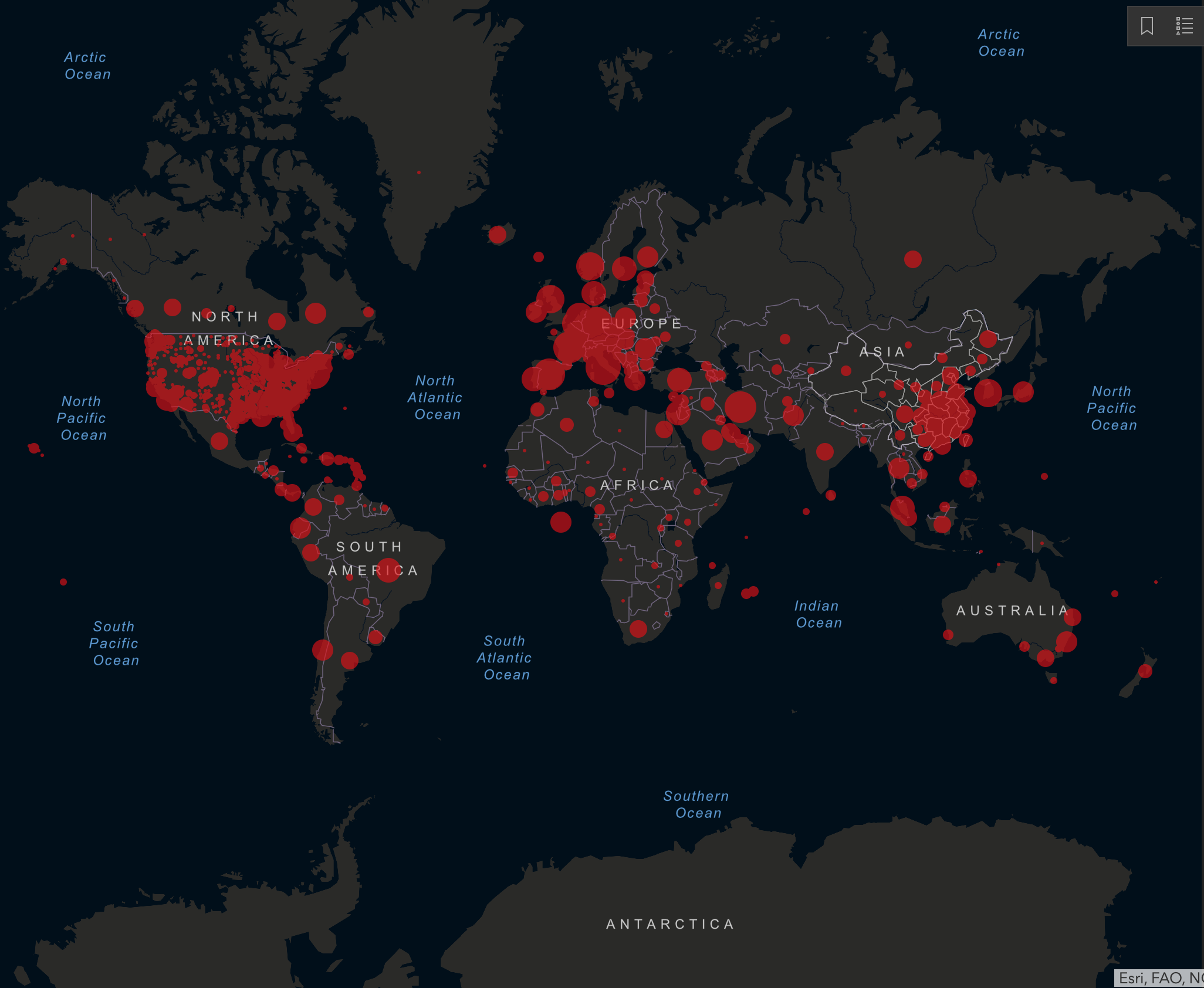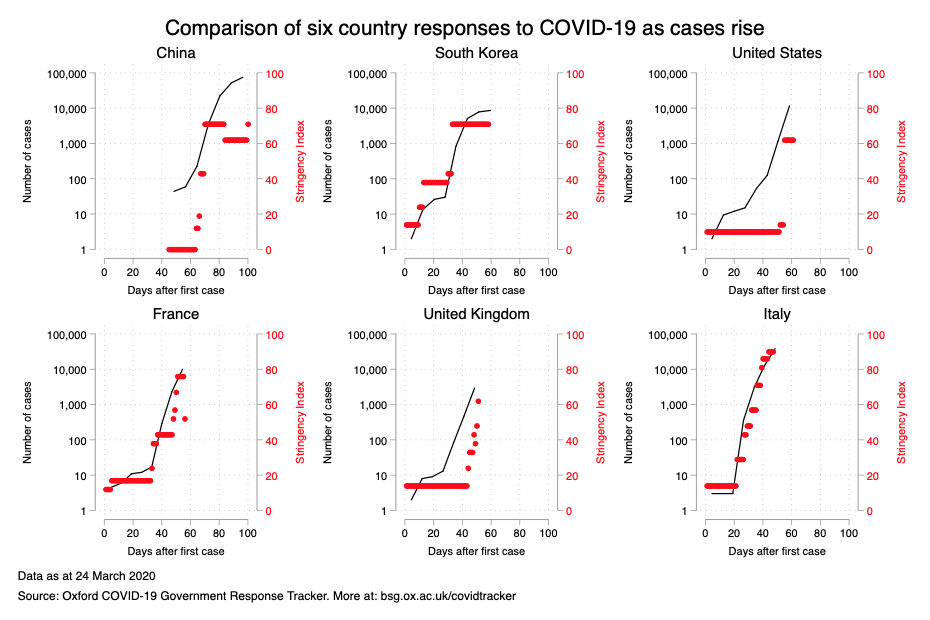
The World Health Organisation officially declared the current Coronavirus outbreak a pandemic on 12 March. A pandemic is technically defined as:
… new disease for which people do not have immunity spreads around the world beyond expectations…
though this is largely subjective, which is why the declaration for the current outbreak was not made till 12 March. But even before that date, most countries realised the Coronavirus epidemic was already on their doorsteps and needed some kind of response.
But how rapid and how stringent have different countries been in their responses?
This is the subject of a new tracker which monitors how different governments have responded to the crisis according to the number of cases they presently have in their country. Specifically, they define something called a stringency index which records, on a scale of 0 to 100, how stringent a country’s measures are. Full details of the definition of the stringency index and the methodology used are available here. Broadly speaking, the more restrictive and widespread a country’s measures, the greater the value of the index. However, the index does not measure how effective the measures are, nor how strictly they are applied or followed.
The tracker is live, which means it is regularly updated. However, as of 24 March, a summary of the way 6 different countries have responded to the crisis is contained in the following figure:

For each country, time is measured in days since the first case appeared in that country, and the black curve shows the trajectory of the epidemic in terms of number of cases. (Bear in mind though that the number of cases is also related to the number of tests carried out, so direct comparison of these curves across countries may not be entirely valid).
The red dots show the value of the stringency index on the same timescale. You need to look at the right-hand axis to read-off the actual values of the index. For all countries the stringency index has generally risen as the epidemic has grown: countries have responded to the crisis by bringing in measures to control the virus spread. But there are significant differences across the different countries:
- In France and especially Italy, the stringency index follows the trajectory of the epidemic very closely. In other words, governments there have responded quickly to the scale of the epidemic as it has grown.
- In South Korea, where the epidemic has been largely controlled, the stringency measure values increase ahead of the growth of the epidemic. That’s to say, the government has anticipated the growth of the epidemic and brought disease control measures in quickly to stop the epidemic growth before it occurred.
- The United Kingdom’s first use of restrictive measures was very slow, and they have since been playing catch-up relative to the size of the epidemic.
- In the US, there was almost no attempt at control until long after the start of the epidemic. Belatedly, more stringent measures have been applied, but these are still substantially less restrictive than those of France or Italy.
- China’s pattern is more complicated. Since they were the first country affected by the outbreak, it’s perhaps understandable that their initial response was slow. Their subsequent response was rapid, though, enabling a subsequent reduction in stringency, which has more recently been raised again – presumably in an attempt to prevent a second wave of the epidemic. The maximum stringency index is considerably lower than that of France or Italy, presumably because although their measures were more restrictive, they were localised in severity to the hardest-hit province of Hubei.
One might quibble about the actual definitions used for the stringency index, but these conclusions broadly chime with common perceptions about the efficacy of different government responses to the epidemic.
